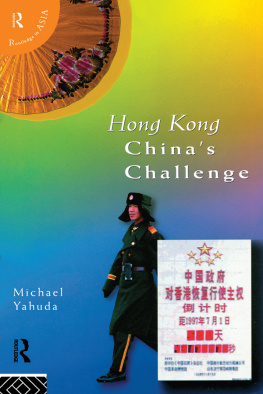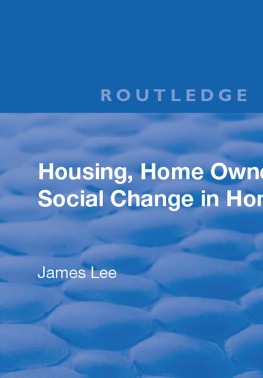Contents

SUICIDAL BEHAVIOUR, BEREAVEMENT AND DEATH EDUCATION IN CHINESE ADOLESCENTS
First published 2002 by Ashgate Publishing
Reissued 2018 by Routledge
2 Park Square, Milton Park, Abingdon, Oxon OX14 4RN
711 Third Avenue, New York, NY 10017, USA
Routledge is an imprint of the Taylor & Francis Group, an informa business
Copyright John W. L. Tse and Christopher Bagley 2002
All rights reserved. No part of this book may be reprinted or reproduced or utilised in any form or by any electronic, mechanical, or other means, now known or hereafter invented, including photocopying and recording, or in any information storage or retrieval system, without permission in writing from the publishers.
Notice:
Product or corporate names may be trademarks or registered trademarks, and are used only for identification and explanation without intent to infringe.
Publishers Note
The publisher has gone to great lengths to ensure the quality of this reprint but points out that some imperfections in the original copies may be apparent.
Disclaimer
The publisher has made every effort to trace copyright holders and welcomes correspondence from those they have been unable to contact.
A Library of Congress record exists under LC control number: 2001053713
ISBN 13: 978-1-138-73094-6 (hbk)
ISBN 13: 978-1-315-18923-9 (ebk)
Suicidal Behaviour, Bereavement and Death Education in Chinese Adolescents
Hong Kong Studies
Edited by
John W. L. Tse
City University of Hong Kong
Christopher Bagley
University of Southampton and
Royal Free and University College
School of Medicine, London

This interesting book makes a valuable contribution in several ways. It combines an academic perspective with a series of practical applications for improving the quality of life of children and adolescents, not only in Chinese cultures but also in communities everywhere. The book also offers valuable insights into the field of cross-cultural psychology, as well as important lessons for educators in all parts of the world who are concerned with suicide prevention.
Sound statistical studies are balanced by valuable qualitative work, and the chapter by Catherine Tsang offers a particularly successful application of the use of grounded theory.
I commend this book to educators, clinical specialists and social workers not only in Chinese cultures, but also to all of those who work with multicultural populations in Europe and North America.
Gajendra K. Verma
Sarah Fielden Professor of Education
University of Manchester
Dr John W.L. Tse is an Associate Professor in the Department of Applied Social Studies at the City University of Hong Kong. He has degrees in education from Canada, and a doctorate from the University of Nottingham, England.
Dr Christopher Bagley is Professor of Social Work Studies at the University of Southampton. He previously held a chair of child welfare at the University of Calgary, and was Reader and then Visiting Professor in the Department of Applied Social Studies, City University of Hong Kong. He is also a Research Fellow in the Academic Department of Psychiatry, Royal Free Hospital, London.
Banny Bing-Yee Cheng, MSW, is Centre Director of The Comfort Care Concern Group, Hong Kong.
Joyce Lai-Chong Ma, PhD, is Professor and Chair of the Department of Social Work at the University of Hong Kong.
Mak Hoi-Wah, MSW, is Assistant Professor in the Department of Applied Social Studies, City University of Hong Kong.
Catherine Tsang Yuk-Chun is Senior Social Worker at the Bradbury Hospice in Sha Tin, Hong Kong. Her chapter in the present volume is based on her MSc dissertation at the University of Southampton.
Anthony Muk-Leung Yau, MPhil, is an instructor in the Department of Applied Social Studies, City University of Hong Kong.
Contents
John W.L. Tse and Christopher Bagley
John W.L. Tse, Christopher Bagley and Mak Hoi-Wah
JohChristopher Bagley and John W.L. Tse
Christopher Bagley and John W.L. Tse
John W.L.Tse, Christopher Bagley and Anthony Muk-Leung Yau
Catherine Tsang Yuk-Chun
Banny Bing-Yee Cheng and Joyce Lai-Chong Ma
John W.L. Tse
JOHN W.L. TSE AND CHRISTOPHER BAGLEY
Summary
Dimensions of distress are generally similar in studies of Chinese adolescents, in comparison with Western studies, and it is appropriate to use translated measures of mental health. However, additional measures may be necessary to capture aspects of a Chinese cultural identity. Impaired self-esteem, depression, suicidal ideas and behaviour were in a number of studies, interlinked in populations of Chinese adolescents. The once stable suicide rate in Chinese youth in Hong Kong showed a marked rise in the early 1990s, and although this rate has now stabilised, suicide remains a major cause of death in Hong Kong youth. Suicide in females relative to rates found in males, are particularly high. This could be linked to a preferred method of self-harm jumping from high buildings which is almost inevitably fatal. Identified risk factors are a sense of anomie or normlessness in a material and rapidly changing culture; a decline in family cohesion and strengths; sexual and relationship problems, including sexual abuse, and negative stereotypes surrounding an emerging gay identity; continued educational pressures and a high rate of school drop-out; and continuing levels of poverty and income inequality. At the same time, there have been increasing rates of substance abuse, and increasing rates of juvenile crime, increases which may share causes with pressures which lead some adolescents to consider or attempt suicide. Case studies of adolescent suicide are presented to illustrate these pressures. Schools could play a major role in suicide prevention, but large classes, the traditional role of the teacher, and a dearth of school counsellors have largely prevented this.
Introduction: Issues in Cross-Cultural Psychology
The research which we discuss, and the empirical work which we have undertaken and present in subsequent chapters frequently uses Western psychological instruments and concepts in the analysis of the psychological problems of youth in Hong Kong and other parts of China. In the past three decades the discipline of cross-cultural psychology has emerged with some salience, arguing that American models of measurement and psychological process may often be inappropriate in considering psychological issues in other cultures (Bond and Smith, 1993).
The psychologist Michael Bond who has observed Chinese culture for many years has carefully delineated the unique features of Chinese culture, as well as the many ways in which psychological processes are similar for individuals in both eastern and Western cultures (Bond, 1986 and 1991). At the same time Bond and his colleagues (Yang and Bond, 1990; Yik and Bond, 1993) have identified unique psychological and normative features of Chinese cultures.










